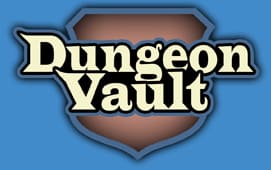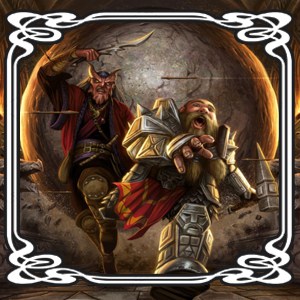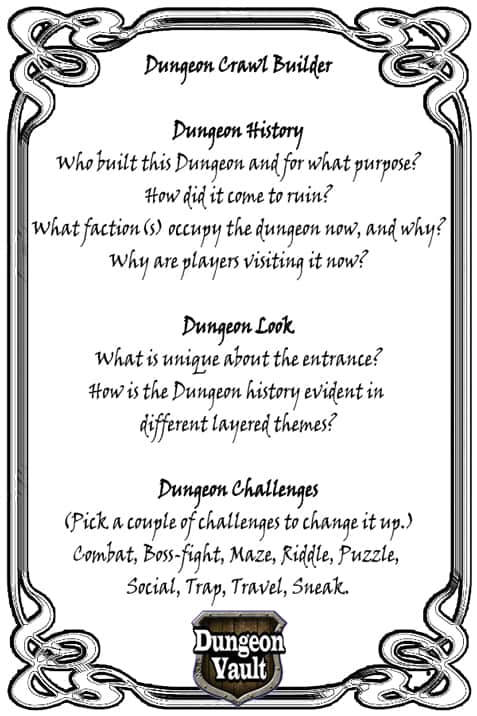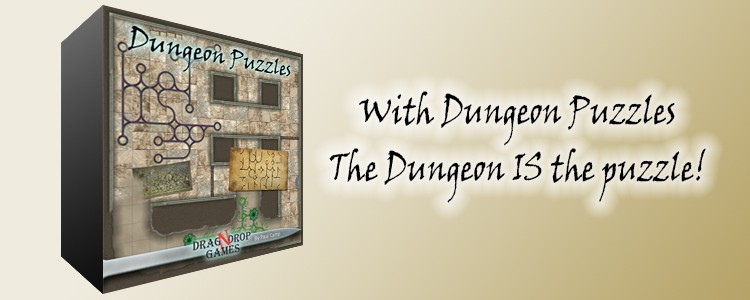
Dungeons Crawls are at the heart of Dungeons & Dragons. Every Dungeon Master should know how to DM a Dungeon Crawl. But how do you DM a Dungeon Crawl?
There are many aspects to master when learning how to DM a Dungeon Crawl. DMs can focus on learning one aspect each game session. In the best Dungeon Crawls all the aspects are added together in a way that supports the narrative and gives players an unforgettable experience.
Sounds good huh? But trying to get it right all at once is easier said than done. After doing over a thousand Dungeon Crawls we have developed a method for DMing better Dungeon Crawls.
1. Play to Your Strengths
Not everyone is the “dungeon crawl” type. Some of us really enjoy playing video games full of dungeons like Skyrim, while others may enjoy a more socially interactive game like the Dragon Age series.
With any tabletop role-playing game there are always the three pillars of adventuring: combat, exploration, and social interaction. Most of us will instinctively think “exploration only” when it comes to crafting a dungeon crawl, but as a DM you can have your dungeon crawl focus on any pillar you prefer.
Is your dungeon crawl a ruined temple full of priests lamenting their lost faith, begging for answers? Or is it a web-choked tomb full of venomous spiders? Or maybe there is a civil war going on between two warring factions of dark elves deep in the subterranean tunnels that your players must pass through.
Find out what pillar works for you and your table, and start there.
2. Create a Quick Outline for Your Dungeon Crawl
It can be daunting to craft a full dungeon for your party, especially if you’re a fresh-faced DM whose players are demanding an epic campaign through a haunted house (I’m speaking from personal experience here.) With all of those pesky rules, stat blocks, maps, and so forth, it would be easy to give up – but worry not. Using our method you can create your own dungeon crawl with ease.
Ideas are cheap and setting up a Dungeon Crawl for your players to enjoy shouldn’t take DMs more than a couple of minutes. So here is our Quick Dungeon Crawl Creator for you to enjoy! Just answer the following questions:
Right-click to download and print image.
For personal use only.
Using these questions, it took me about 1 minute to come up with the following Dungeon Crawl outline. And with the outline ready, all other pieces of your dungeon start to fall into place fast.
Example Dungeon:
After betraying their God the Fallen Angels carved out a Gothic style church into the white cliff side of a forgotten shoreline. Its narrow high peaked door lies hidden in a fold in the shoreline. No one knows what happened to the Angels, but now a black fungus is spreading through the once white columned halls. And goblin raiding parties, covered in this fungus – that seems to give them special powers – have been terrorizing nearby villages.
Roll 1d4: 1 Combat, 2 traps, 3 social, 4 puzzle.
If you have the maps and stat blocks available to you, you’re one line of carefully crafted flavor text away from turning those goblins guarding the entrance into undead servants of a lich waiting within. When using a standard module or pdf, I personally recommend always changing at least the flavor, tailoring it to fit whatever story or atmosphere you as a DM are trying to spin.
It’s also never a bad idea to have random tables prepped for you to roll in, just in case you haven’t had quite enough time to craft a fallen fortress that week due to real life events. Or maybe mid-session you notice that things are feeling stale, and whatever you saw in your mind when prepping isn’t translating to the Player table.
These tables don’t have to be overly complex. They can be as simple as rolling a d6 for various contents like living quarters, barracks, random encounter, etc. The 5th edition Dungeon Master’s Screen even has a handy “something happens!” table to roll on in case things begin to get boring while the player characters are slogging through the flooded sewers of your dungeon.
3. Create a Living Environment
We’ve all abused it. The quicksave feature in a video game. The last mad rush of fully restorative items right before the final boss. DON’T let your players do this. Make stopping dangerous. After all, your players may be trying to get the evil in the dungeon. But the best dungeons try to get them, too.
Have pre-written penalties in place for taking too long, stopping to rest, etc. Maybe if the players stop to take a nap and replenish their hitpoints, the sacrifice is completed and the princess dies. Or, maybe if they try to barricade themselves in a room to rest for the evening, they awaken to find hordes of skeletons gathered just outside the door.
The point is, don’t let your players take the danger out of the dungeon crawl by hitting the “pause” button. Every encounter doesn’t necessarily need to be of a deadly quality, but there should always be a threat present or the danger of invasion. Remember, your dungeon should be a hostile environment, with potential peril around each corner.
Any time dungeon crawls come up, I think of the Sunless Citadel adventure, which was refurbished for Fifth Edition Dungeons and Dragons. I originally ran the adventure in 3.5, and took the liberty of adding a civil war occurring between a tribe of goblins and a cult of kobolds.
The players chose to support the kobolds, and established the Sunless Citadel as a new burgeoning community of traders and artisans, working hard to end the stigma on the kobold race.
Totally not in the book! Just an idea that came to me as a young DM, and the players took it and ran with it. This provided continuous adventures between large story arcs as the players had to return periodically to save their kobold friends from threats emerging from the subterranean world beneath their new settlement. The interior of the dungeon constantly shifted and changed throughout the war and after, providing a living, shifting environment that the players never got bored of.
In short: The dungeon crawl you design is just the backdrop of a dynamic story. Add the ingredients for an epic story, sit back and let events unfold as players explore your dungeon.
4. Share the Spotlight
When we think dungeon crawl, most of us are going to see a rogue skulking through the darkness, dagger in hand slinking up behind an enemy or deftly disarming a trap. But are rogues the only characters that can be useful in a dungeon?
That’s up to you.
As the DM, you have the opportunity to craft or alter a dungeon crawl to specifically challenge or afford opportunity to your party. No two groups of player characters are the same, and there are near-infinite combinations of characters that could enter a dungeon crawl at one time.
Maybe you provide arcane puzzles for your local wizard to solve, or a divine ritual that must be completed by your paladin or cleric. Perhaps the bard has an opportunity to talk his way through an encounter, or the fighter and barbarian have to brute-force a broken lock open.
These small, seemingly inconsequential puzzles and obstacles may not scream “epic dungeon crawl,” but they will DEFINITELY make each of your player characters feel useful and valuable, rather than just feeling like they have to follow the rogue to the big boss, and hope to not bungle a stealth check.
Look for opportunities to give each player the spotlight. Their party of adventurers is an elite team, each one specializing in a specific area. You don’t necessarily have to include entire story arcs for each individual party member, but everyone should be given the chance to prove their worth.
You’ll know if you need to improve in this area if you look up and two or more of your players have been on their phones for halve the session. Keep the players invested by giving them things to do. They’re here to play a game, not just watch someone else play one.
In short: It’s best to change it up so your dungeon crawl will never feel repetitive and offers something for everyone. That is why we recommend choosing about four types of challenges for each dungeon crawl.
With so much to design, you might want to create some parts of a dungeon and use pre-made traps, puzzles and other challenges from third parties. Of course, DungeonVault has you covered there! Check out our products you can just drag-and-drop into any dungeon.
5. Make it Relevant
Sure, it’s fun sometimes to just turn your brain off and play a hack-and-slash, kill-stuff-get-loot, see-how-many-magic-item-tables-we-can-get-our-dm-to-roll-before-he-flips-the-table dungeon crawl (I’m not salty, I promise) but what if your dungeon crawl sessions are more than just a one-shot adventure? What if they bear consequences that affect the rest of the campaign?
Consider planting seeds in each dungeon around the land that connect to a greater history or story arc for the players to unravel. Maybe they’ve been hired to recover old artifacts and relics from tombs, but their patron constantly sends them to sites taken over by gatherings of cultists in red robes. Or maybe every ancient ruin they enter, they find a fragment of a Sith holocron, the pieces of which were scattered and hidden long ago for fear of the power it holds once made whole.
You don’t even have to know what these dangling plot threads are from the jump. Sometimes ten levels go by and your players bring up that weird mangy bugbear from the first dungeon crawl, and it turns out he’s possessed by an elemental fire spirit that wants to destroy the world (hypothetically, of course.) If you feel stuck, you can always return to the seeds you’ve planted earlier in the game.
Pay attention to the things that catch your party’s attention. If they think it’s interesting enough to bare plot significance, keep whatever that thing is around for the next few sessions.
Maybe that funny little rock they find a level one is actually the key to sealing away a great shadow dragon, or bears the inscription of a ritual that opens the doorway to the plane where the gods reside. Who knows?
You do, Dungeon Master. You do.
By Jamie Helms
Related Question
What are the Top 10 Dungeon Crawl Novels?
- Kings of the Wyld, by Nicholas Eames
- The Divine Comedy, by Dante Alighieri
- The Tombs of Atuan, by Ursula le Guin
- The Promise of the Witch King, by R.A. Salvatore
- The Dungeoneers, by Jeffrey Russell
- Quag Keep, by Andre Norton
- The Copper Promise, by Jen Williams
- Red Nails, by Robert E. Howard
- Another day, Another Dungeon, by Greg Costikyan
- The Zagor Chronicles, by Ian Livingstone



